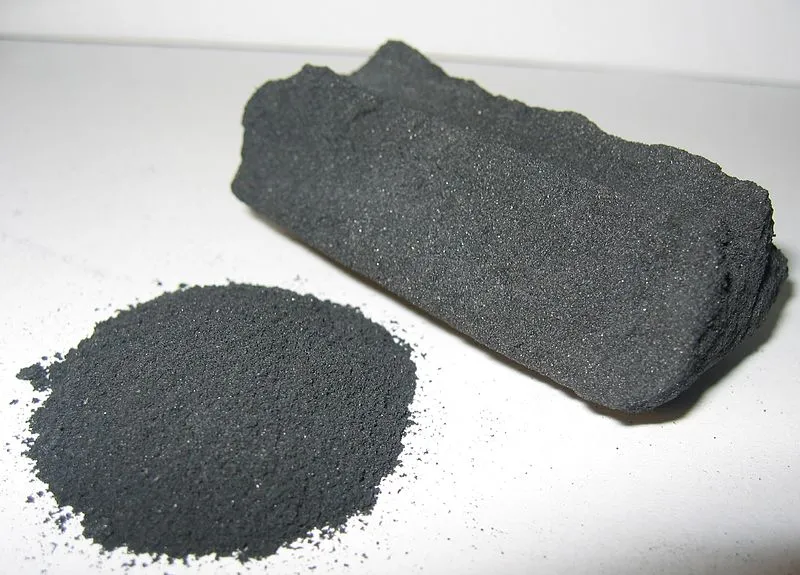Although several materials possess the ability to adsorb, activated charcoal continues to be the greatest option in terms of adsorption power and financial cost, where it has the capacity to absorb a variety of both organic and metallic contaminants. The following are the most major applications for activated charcoal in water treatment plants:
- The elimination of harmful chemical substances that can exist in low quantities, such as pesticides.
- Removing the organic material that results in taste and odor.
- Removing any leftover ozone and free chlorine.
- Eliminate a lot of heavy metal ions.
- Eliminate radioactive materials.
Depending on whether activated charcoal comes in powder form or granular in form there are many ways to use it:
1- Activated charcoal powder:
The size of the fine granules that make up activated charcoal powder ranges from 10 to 50 μm. Before the sand filtering stage, activated charcoal powder is applied to the filter surface, but it must be added in vast quantities to completely remove all contaminants, and it cannot be regenerated. However, there are a number benefits to using activated charcoal powder, the most significant of which is the quick adsorption kinetics. Additionally, compared to using it as granules, it achieves a greater surface area for contact with the liquid.
2- Granular activated charcoal:
Granular activated charcoal may be utilized in numerous types of filters, where it serves as both an adsorbent and a filter material. Water flows through consecutive layers of activated charcoal, resulting in a drop in the concentration of adsorbable elements, which may reach zero.
Granular activated charcoal can be added to the sand filter in the first stage of filtration, and an additional filter containing activated charcoal can be added in the second stage following sand filtering. This makes it possible to have drinking water that is extremely pure.
References:
- [Introduction to Water Chemistry (Pollution- Treatment- Analysis). Dr. Nasser Al-Hayek. Publication of the Higher Institute for Applied Sciences and Technology (HIAST). Syrian Arab Republic, 2017.]
- Taparhudee, Wara (2002). "Applications of Paddle Wheel Aerators and Diffused-Air System in Closed Cycle Shrimp Farm System" (PDF). Witthayasan Kasetsart (Sakha Witthayasat). 36: 408–419. Retrieved 26 April 2020.
- Unsafe water kills more people than war, Ban says on World Day". UN News. 22 March 2010. Retrieved 10 May 2018
- Raymond Desjardins- Livre: Le traitement des eaux- 2éme edition- Ecole Polytechnique de Montréal- 1997- ISBN 2-553-00643-8
- Drinking Water Treatment- EDX- Delft University of Technology.
- Book- Drinking Water: Principles and Practices- by Hans J C Van Dijk (Author), Jasper Q J C Verberk (Author), Peter J De Moel.

